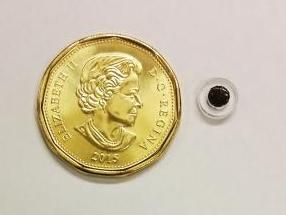Nanotech drug delivery shows promise for improved melanoma treatment
Researchers have developed a new three-drug delivery system for cancer treatment, especially metastatic melanoma, the deadliest form of skin cancer - and shown that the system may have particular value with cancers like this that often spread through the lymphatic system.
The new technology takes advantage of nanoparticles that can migrate to, and increase the effectiveness of an attack on cancer cells in the body's lymph nodes. This can also reduce the development of drug resistance and the broader toxicity often associated with this type of chemotherapy.
The findings were made with laboratory animals by researchers from the College of Pharmacy at Oregon State University. The work was supported by an OSU startup fund, and a provisional patent has been granted for this technology.
"Melanoma can be a very difficult cancer to treat because it often metastasizes and travels through the lymphatic system," said Adam Alani, an assistant professor in the Oregon State University/Oregon Health & Science University College of Pharmacy, and lead author on this research.
"Melanoma has a high mortality rate because the lymph nodes tend to act as a haven for cancer cells, and allow them to resist treatment through chemotherapy," he said.
The new OSU research, however, was able to combine three anti-cancer drugs at the same time into a nanoparticle delivery system. After injection, these nanoparticles primarily migrated to lymph nodes, acted in a synergistic manner that was more powerful than any one drug could be separately, and were able to maximize their impact in those locations while minimizing the development of drug resistance and overall toxicity.
Laboratory mice treated with this approach all survived. The therapy caused no apparent negative effects, and at least one type of the nanoparticles migrated effectively to distan
t lymph nodes, where the drugs significantly reduced the number of melanoma cells.
More research with animals, experiments with more aggressive forms of cancer, and eventually human clinical trials will still be needed for any treatment is available for use.
This could become an important advance in the treatment of any type of cancer that tends to move through the lymphatic system, Alani said. This includes melanoma, but also breast, head and neck, prostate, pancreatic, lung and gastric cancers.
Up to 80 percent of melanomas metastasize through the lymphatic system, the researchers said in their report, and the tumor cells even secrete growth factors to further streamline their progress. The enlarged lymphatic vessels "act as a freeway for the metastatic cells to gain access and spread to distal lymph nodes and organs," they wrote in the study.
The major drawback of existing therapies, they said, is the inability to deliver therapeutic concentrations of drugs to the lymphatic system without creating systemic toxicity. Use of drugs one at a time also tends to breed resistance to them.
The nanoparticles used to carry these cancer drugs are stable, increase the drug circulation time, and can deliver multiple drugs in a single step to the desired target, the research showed. They offer a novel therapeutic option for effective melanoma treatment, the scientists wrote in their conclusion.
Original publication
Bhuvana S. Doddapaneni and Sergiy Kyryachenko and Sharmeen E. Chagani and Raid G. Alany and Deepa A. Rao and Arup K. Indra and Adam W.G. Alani; "A three-drug nanoscale drug delivery system designed for preferential lymphatic uptake for the treatment of metastatic melanoma"; J. Controlled Release; 2015






















































